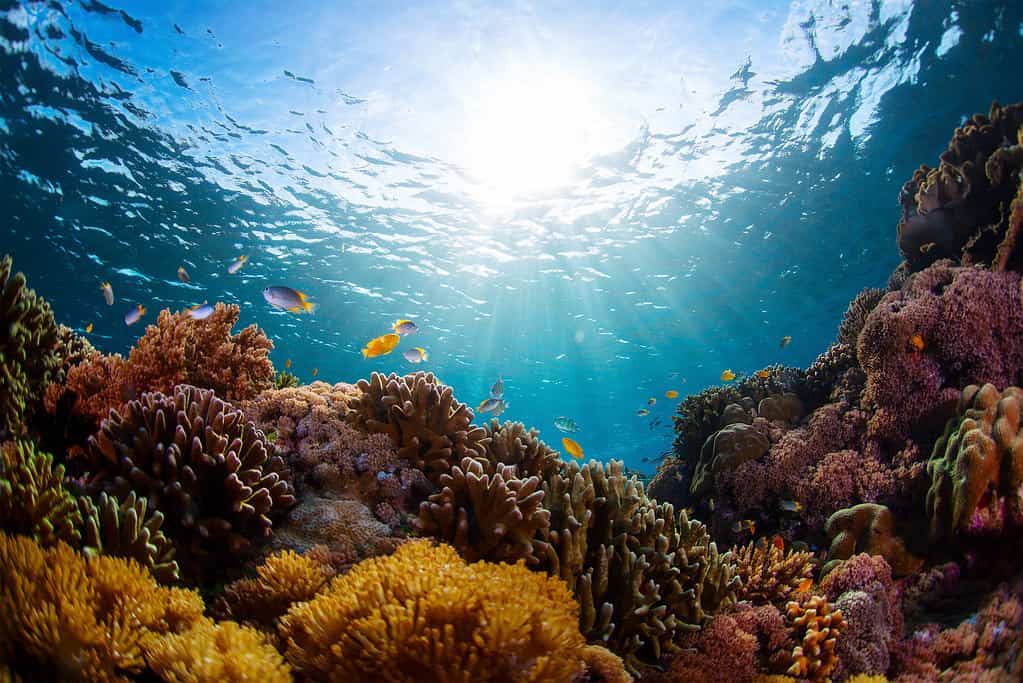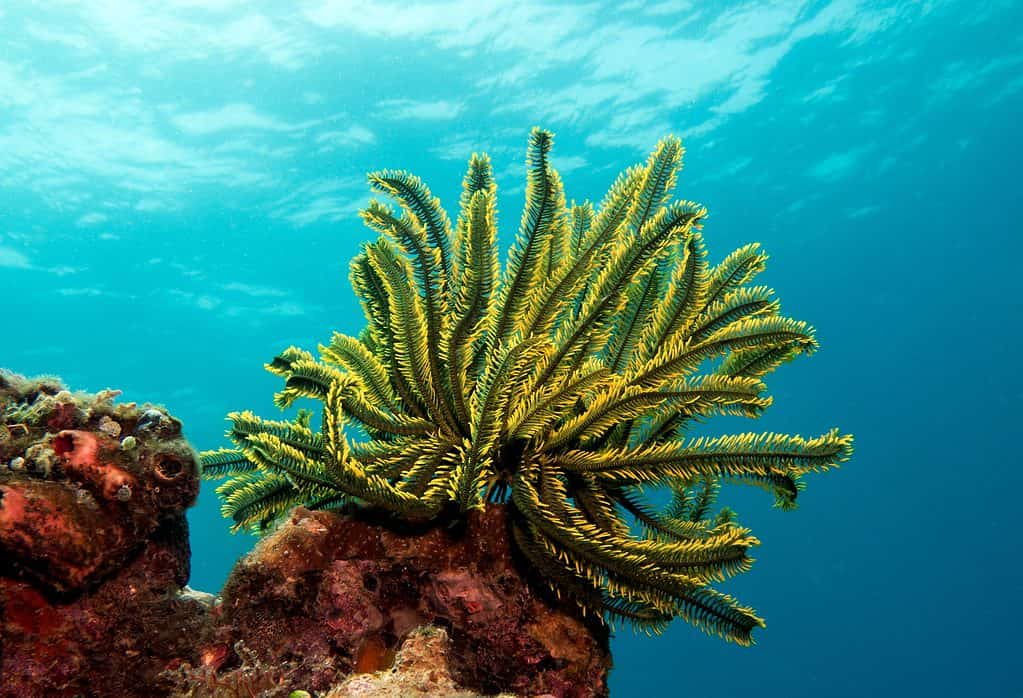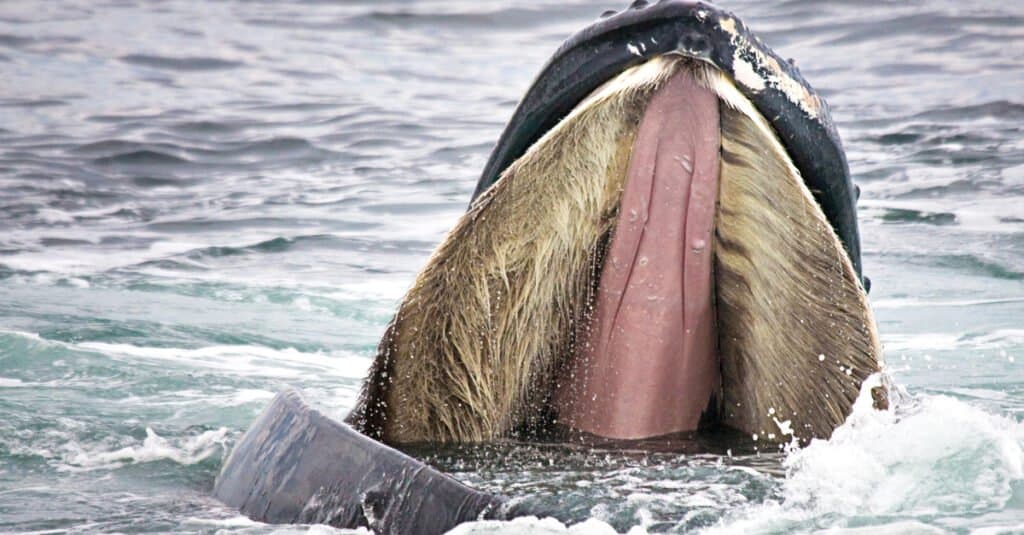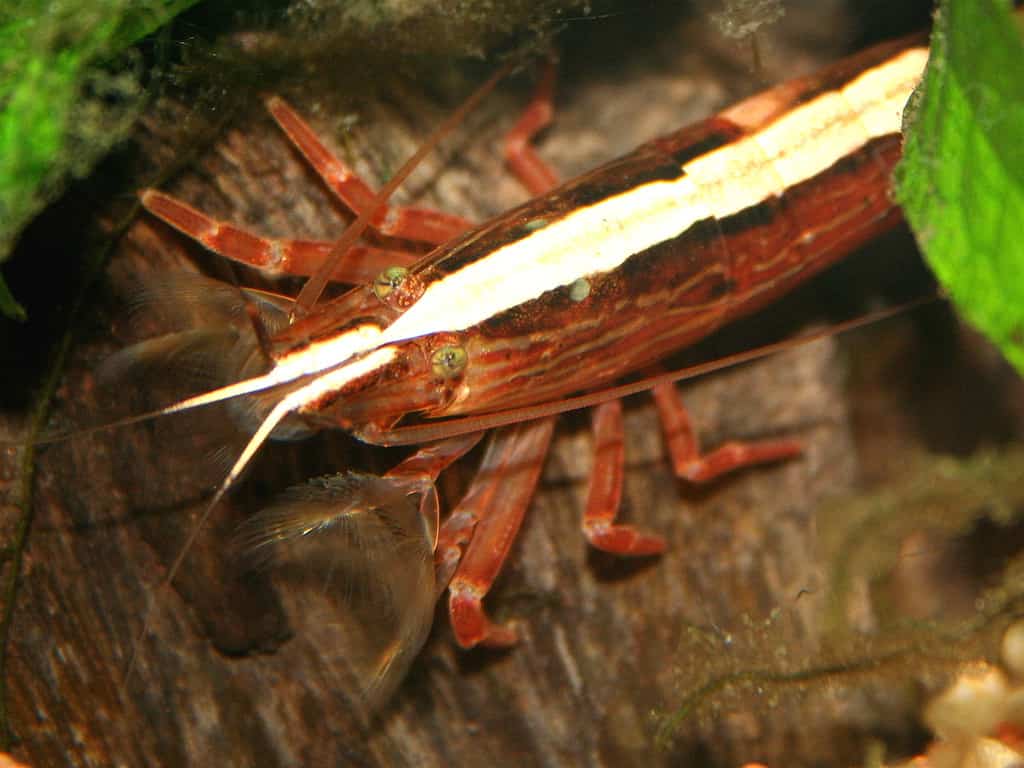Suspension feeding is a strategy that many animal species have adapted for capturing their food whereby they collect suspended prey, edible matter, or both from the water around them. These animals usually have special adaptations that allow them to easily separate their food from their environment. Often, they collect very small food items like phytoplankton, zooplankton, bacteria, and various forms of plant matter or detritus. Others, however, may eat larger food items like fish or other suspension feeders.
This oftentimes simple feeding strategy powers an incredible and surprisingly diverse cast of animal species. While many suspension feeders are small ocean dwellers, a number of larger marine and freshwater animals use this feeding strategy as well. Some suspension feeders even live on land.

Coral reefs are home to many types of suspension feeders like corals, feather duster worms, and anemones.
©mihtiander/iStock via Getty Images
Types of Suspension Feeders
Suspension feeding is an incredibly successful feeding strategy used by animals from wildly different lineages. These animals make use of a wide array of organs and body structures to gather and consume their food. Because there is such diversity among suspension feeders, biologists break them down into four broad categories. Based on how an animal collects its food, it can be an active, passive, facultative, or combination feeder. We’ll expand on each type below.
Passive Feeders
Some animals are passive suspension feeders and rely entirely, or almost entirely, on water movement to bring them their food. Corals are a great example of this feeding type. Because they are anchored in place for their entire lives, their position and orientation in an ocean current play a huge part in determining their feeding success.
Not all passive feeders are immobile, however. Feather stars use their long, filamentous appendages to capture passing food particles during the nighttime and then retreat into the reef with the sunrise. When their sticky filaments, called pinnules, snag a food particle, they pass it into a special groove in the center of the arm which in turn passes it into the mouth. While feather stars can remain anchored to the reef for hours at a time, they may also wave their arms to propel them through the water, collecting food as a byproduct of their travel.

Feather stars anchor themselves at various locations along their home reef and rely almost entirely on passing water to bring them their food. Unlike corals, however, they can relocate if their position in the current isn’t ideal.
©Paulo Violas/Shutterstock.com
Since they aren’t intentionally grabbing or pulling in their food, passive suspension feeders need to be able to hold onto anything edible that they might collide with. Many of them rely on sticky mucous like that of the feather star to retain their food particles. Others, like the moon jellyfish, use special explosive cells to stun or paralyze any prey that contacts its tentacles. Once a jellyfish has stunned its prey, it can pull it up into its mouth. Because of their wide shape and short tentacles, moon jellies can pull food toward their tentacles simply by swimming around. Now that’s efficient!
Active Feeders
Although feather stars may be quite active while they eat, they are considered passive feeders because they rely heavily on external forces to collect their food. Active suspension feeders, on the other hand, take a more involved role in securing their meals. They intentionally pull water through one or more specialized body structures that filter edible matter from passing seawater. For this reason, they are also referred to as filter feeders.
For example, some bivalves like oysters and clams use a pair of siphon tubes to pull water through their bodies, straining out their food in the process. The water can only pass through their bodies in a single direction, ensuring that food cannot escape once captured. While they usually remain stationary while they do this, they expend their own energy to increase their odds of feeding successfully.
Did you know that the biggest animal on earth is a filter feeder? Blue whales, among other whales in the parvorder Mysticeti, use a special structure called a baleen to catch their food. As they swim, they take in large gulps of water. Then, they force it outward through the fringed structure of the baleen. With the water gone, the whale is left with a nice, big mouthful of food that then swallows whole. This is called gulp feeding. Other baleen whales skim through plankton clouds or trawl the depths like the gray whale.
The size and density of a whale’s baleen depends on what type of prey it targets. The rare right whale consumes tiny copepods, so it has a very fine baleen. Blue whales subsist primarily on larger krill, so they have coarser baleens.

The photo above shows the fringed structure of the baleen on either side of the mouth that separates the seawater from the whale’s food.
©John Tunney/Shutterstock.com
Facultative Feeders
Some suspension feeders make use of both active and passive feeding strategies to collect their meals, switching between them as necessary.`
Bamboo shrimp demonstrate facultative feeding very well. When there is strong current, the shrimp hunkers down and opens up its several fan-like appendages. These specialized structures allow the shrimp to passively take advantage of the current and strain out any wayward food particles. Once the shrimp has captured a suitable amount of food, it passes its meal down to its mouth and reopens its fan. The bamboo shrimp certainly doesn’t starve when there are no currents, however. Although its fans are adapted for passive suspension feeding, it can also use them actively to scour the streambed for detritus or free-floating algae.

The bamboo shrimp (
Atyopsis moluccensis) has very fine, fan-like appendages that it uses to collect food passively in a current.
©Faucon / CC BY-SA 2.5 – License
Some land-dwelling animals are facultative feeders as well. Flamingoes have a specialized “upside-down” beak that functions in the same way as the baleen of a whale. To use its special beak, the flamingo will dip its head into the water upside-down and sway it from side to side, hoping that its food will end up in its mouth. If this effort isn’t fruitful, the bird can use its tongue to forcefully pump water across its plates. Like whales, the coarseness of a flamingo’s beak structure determines the size of prey it can feed on. Depending on which species it belongs to, a flamingo may be able to filter organisms as small as .02 inches out of the water column!
Combination Feeders
While some animals switch back and forth between passive and active feeding strategies, some can carry out both types simultaneously!
Sponges are a great examples of combination suspension feeders. They are able to efficiently separate a wide variety of particles from their surroundings, with or without a current. Inside the porous body of a sponge is a maze of passageways that contains vast numbers of flagella. These flagella can move back and forth to pull impressive volumes of water through the sponge’s pores. From there, the sponge separates out its food and releases the remaining water, along with its bodily waste, through its osculum. Sponges aren’t obligated to create their own current, though! By virtue of their porous structures and the shape of their body cavities, they can also collect food passively. Differences in pressure between the inside and outside of the sponge can also induce flow, pulling seawater into the pores without the sponge pumping anything at all.
The video below demonstrates the active part of this animal’s feeding strategy. Watch how effectively the different types of sponges pull the fluorescent dye through their walls and expel it through their oscula.



